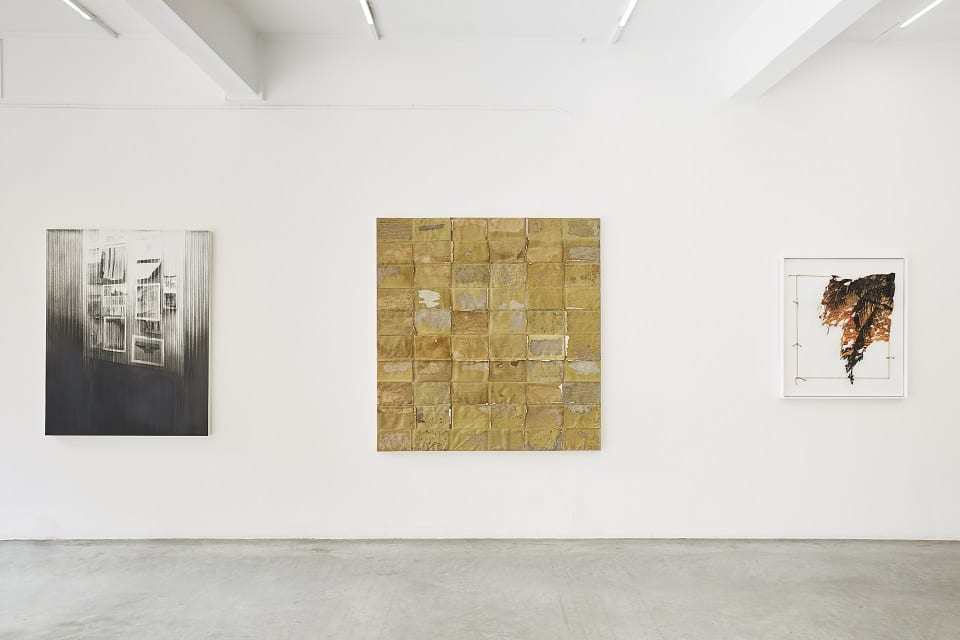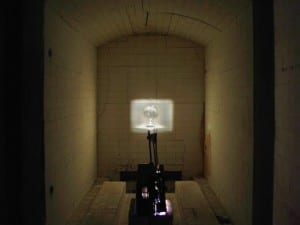Ryan Steadman, American curator and art critic, introduces Trust issues at Ronchini Gallery, London. By the unpublished works, in Great Britain, of: Arielle Falk (b. 1983 Washington, DC. Lives and works in Brooklyn, NY), Samuel Levi Jones (1978 in Marion, IN. Lives and works in Chicago, IL), Augustus Nazzaro (born in East Islip, NY, USA, lives works in Brooklyn, NY) Rachel Rossin (1987, West Palm Beach, F. Lives and works in New York, NY) and Rose Salane (1992, New York. Lives and works in New York, NY) his aim is to do so up to an ideal stage of annulling of degrees and levels of interpretation and intervention. “What Trust Issues hopes to do”, affirms the curator, “is show how younger artists are more often questioning the media because of how overly saturated they are by it in a way artists weren’t in say, the 1960s.”
Rose Salane creates sculptures representing, exploring fragments of information and stories; Arielle Falk finds and prints stock images of paradise as large banners; Sam Levi Jones sources out-dated encyclopaedias, law books or other institutional collections of information, violently removes their covers, and then sews them together; Augustus Nazzaro makes virtuosic paintings that mimic the aesthetics of classified and potentially explosive media; and Rachel Rossin uses both virtual reality and painting to intrude, to overlap the real and the digital realms. Their approaching levels of knowledge are simultaneously individual -the search for inner perfection- and public -thought of as civic and political alerts.
In the gallery spaces, they seek meanings for the individual and the collective. The inscribing of keywords, mantras, or programmatic phrases on the canvases and the numerous pictures of pictures for reflection and intervention they re-writes and divulges, often taking on the character of political manifestos, just introduce a production profile: they’re abstract and mental, intensely physical and gestural, civic and spiritual, and assumes the dimensions of the true programme of Trust issues. “I think all the artists – everyone really – is affected by inaccuracies and biases in the media,” Ryan Steadman considers. “But I think an artist like Augustus tends to be more fascinated by the secrecy of certain medias – how documents can stay hidden or the way fringe subcultures (who are working outside the law perhaps) move their media around in covert ways. Meanwhile, Rose uses the construct of traditional media but in a completely antithetical way. The result is a “news” article that reads more like poetry and offsets a series of both real and unreal objects, creating an uncanny – and unusual – type of narrative.”
Moreover there are a lot of wall works in the show. This is perhaps mostly due to the curator’s affinity to the hand-rendered object versus straight film or video, even though he thinks there are great video artists that also work on this topic. Ryan Steadman analyses contemporary art as a whole, beginning with Modernism, as a turn towards questioning established beliefs, and even more so since the advent of conceptual art. Because of this, variant styles of critical thinking have been the norm in art schools across America for decades, and the newest generation of artists are learning these methods as well.
“Often the artists in this show work on a symbolic level when creating artworks that negate some sort of official media, he eventually concludes, but Augustus Nazzaro does spend a great deal of time sourcing forbidden or extreme media from the internet for his work. Once those images are found they are replicated in paint, but it’s Nazzaro’s physical process that then “obscures” the images in question, rendering them powerless. He does this by sanding his painting surfaces over and over until a forbidden image can barely be seen. Other times he fractures the visibile surface with parallel lines, as in his piece ‘Watch List’. So in a sense, Nazzaro disguises this explosive information through painting (which works as a metaphor as well about the way art often shrouds information.)”
Ginevra Bria
Trust Issues runs until 18 November at Ronchini Gallery, London. Find out more: www.ronchinigallery.com
Credits:
1. Installation view of Trust Issues. Courtesy of Ronchini Gallery, London.




